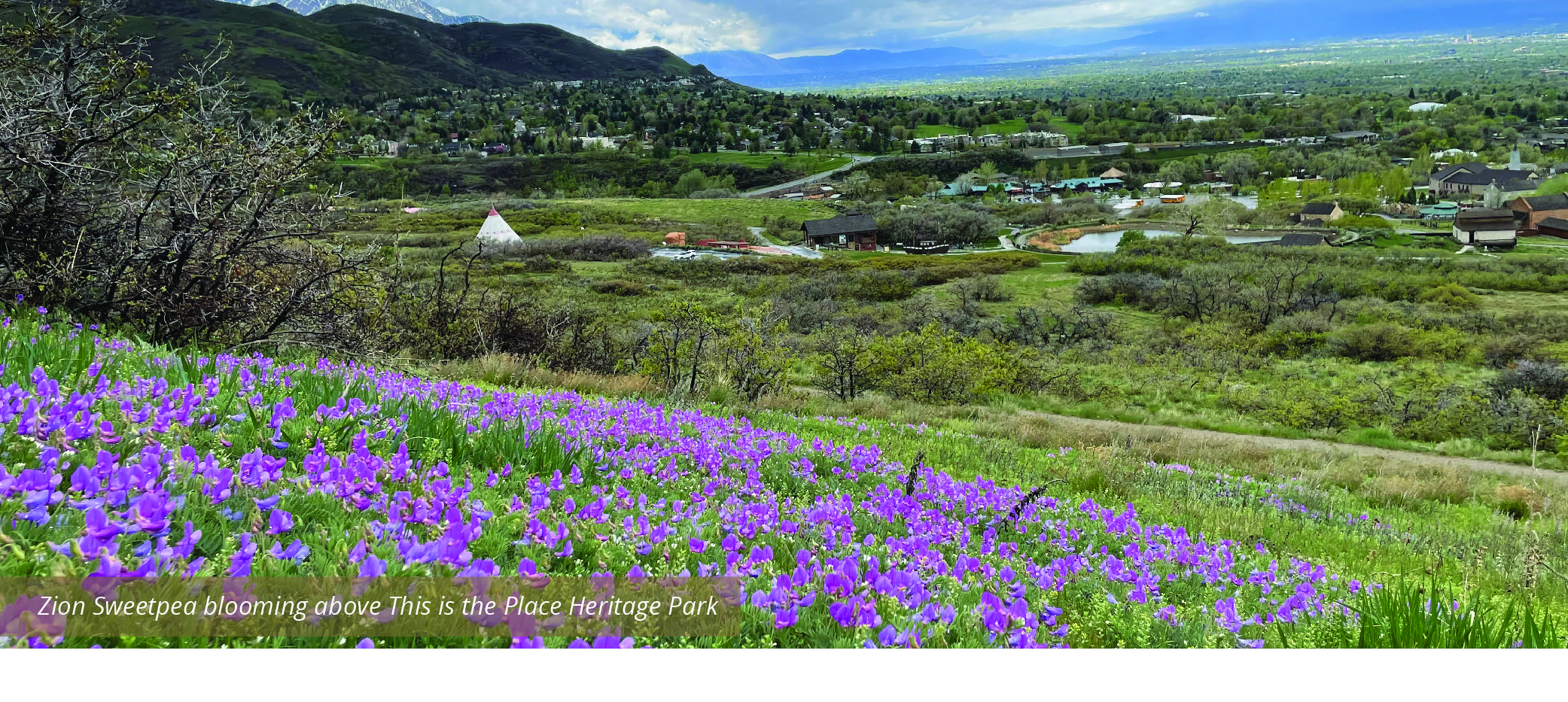
What’s Blooming in the Foothills
Spring and Summer Wildflowers
The Foothills Park Rangers and Foothills Trail Team are spotting lots of beautiful blooms along the Foothills trails! Peak wildflower season in the Salt Lake City Foothills is May through mid-July. When viewing wildflowers, please remember to stay on designated trails and to take only photos, leaving the flowers for all to enjoy!


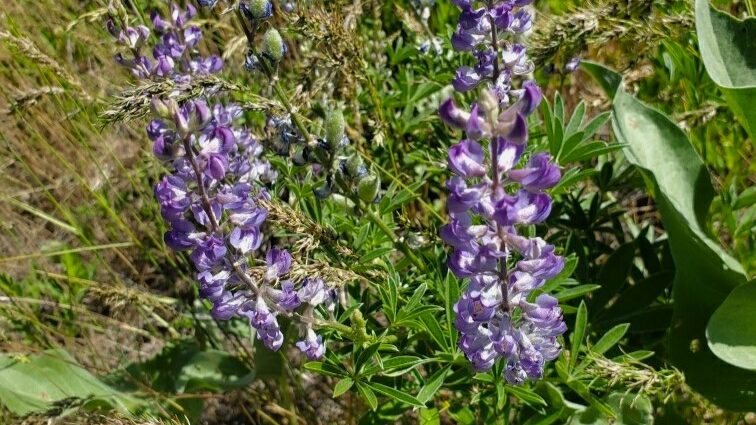
Where to Find the Best Blooms
Which Foothills trails offer the best wildflower viewing? Pretty much all of them! You’ll find a beautiful variety of blooms along all 35+ miles of designated trails at different times throughout the season. Learn more about our Foothills Trail System and find a trail on our Foothills Find a Trail page
Spring Wildflowers
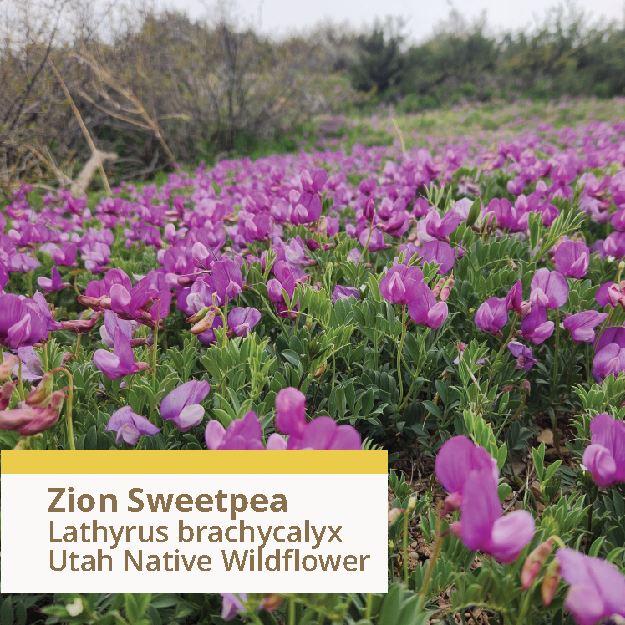
ZION SWEETPEA
Zion Sweetpeas are in the pea family and closely resemble cultivated pea plants. This wildflower spreads easily, sending its tendrils along the ground or rock cliffs. It has narrow leaflets and bright pink to purple sweet-smelling blooms.
Zion Sweetpeas can be found covering the meadows near This is the Place Heritage Park.
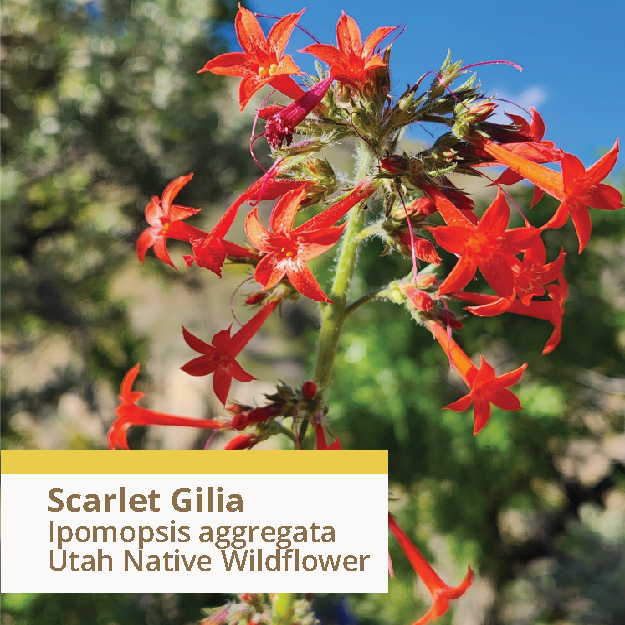
SCARLET GILIA
Resembling but unrelated to the penstemon, Scarlet Gilia flowers are bright red-orange and attract hummingbirds and hawkmoths. They prefer dry soil and are found on sunny hillsides along trails throughout the Foothills. Flowers are 2 -3 inches long and the plant typically grows from 1- 3 feet tall.
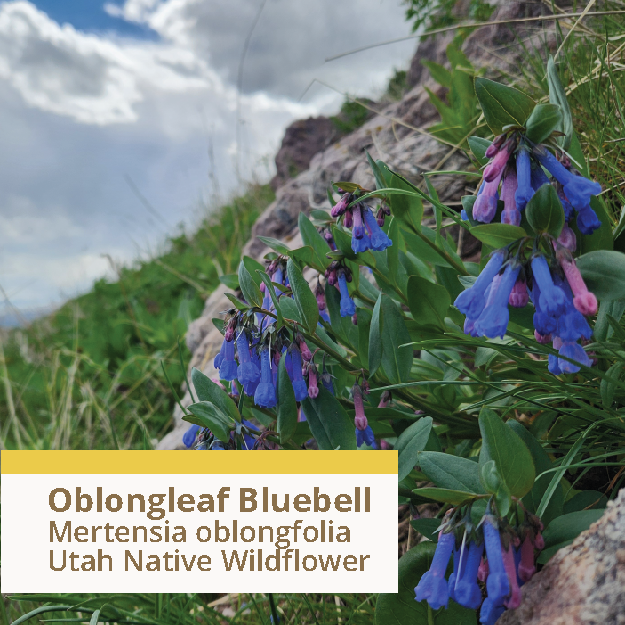
OBLONGLEAF BLUEBELL
Oblongleaf Bluebells thrive in partially shaded areas and meadows and are native to the western United States. They are a member of the borage family of plants. Plant leaves are oval-shaped, and flowers are tubular, typically hanging in a dense cluster from the main stem.
Find Oblongleaf Bluebells along the Terrace Hills and BST Valleyview Trails in the Foothills.
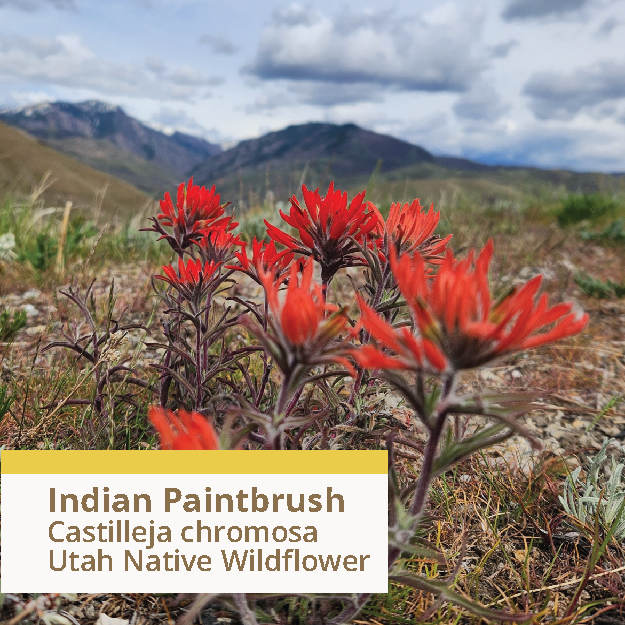
INDIAN PAINTBRUSH
A favorite of hummingbirds and bees, Indian Paintbrush grows widely throughout the western United States at many elevations. The red structures are technically bracts (a form of leaf), not flower petals. They typically bloom from May through June and are found throughout the Wasatch.
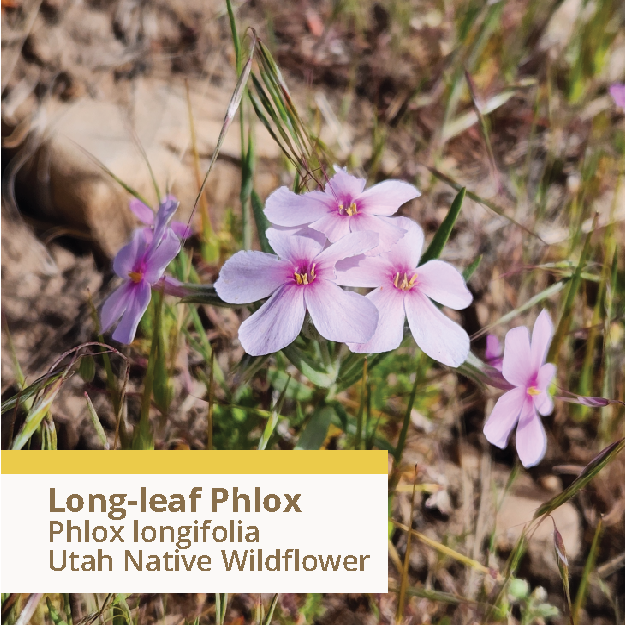
LONG-LEAF PHLOX
Long-leaf Phlox are commonly found in dry, rocky open areas in clumps topped with pale pink five-petaled flowers. It thrives next to grasses and sagebrush, making it an ideal plant for the Foothills. They attract insects including bees and butterflies.
Keep an eye out for Long-leaf Phlox along the BST throughout the Foothills!
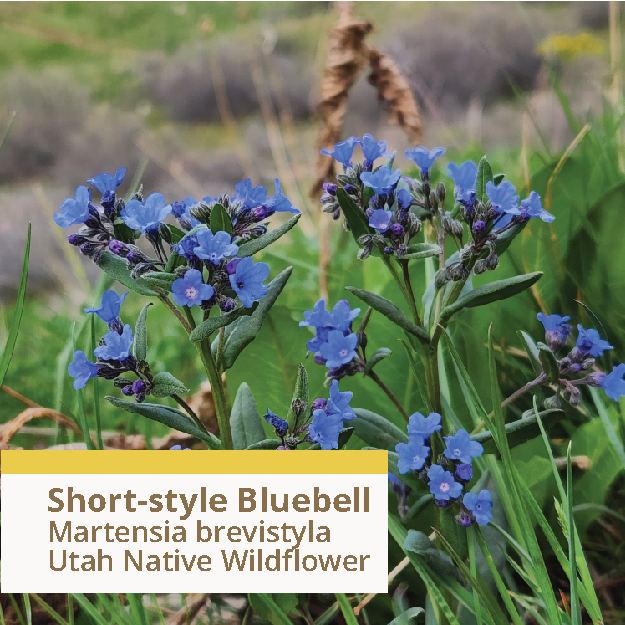
SHORT-STYLE BLUEBELL
Short-style Bluebells bloom in early spring and are commonly found in partially shaded areas and dry meadows. Their bright blue flowers are upright, making it easy to tell them apart from the Oblongleaf Bluebell. They are a member of the borage family of plants. Short-style Bluebells can grow from 4 to 16 inches tall.
Summer Wildflowers

SEGO LILY
Calochortus (sego lily) is our state flower and is beautifully featured on Salt Lake City‘s new logo. Indigenous peoples used the bulb as a food source and taught early Utah settlers to do the same. Sego Lilies are intolerant of excessive water and prefer somewhat sandy soil, which makes them a perfect match for our Foothills habitats.
Our team has found Sego Lily blooms throughout the central Foothills above and below the Bonneville Shoreline Trail (BST), the Avenues Ridge Trail, and the Valleyview portion of the BST.

LUPINE
Did you know that the Lupine is a member of the legume (pea) family? It also helps add nitrogen into the soil which is a benefit to neighboring plants. It is quite common throughout the intermountain west and grows throughout the Foothills. We are currently seeing its blue blooms along the BST from the Avenues Ridge all the way to Twin Peaks.

WOODS ROSE
Also called Wild Rose, Woods Rose is blooming throughout the Foothills in thickets of Gambel oak, juniper, and other shrubs. Woods Rose is hardy and survives well in harsh climates and is very effective for erosion control.
The fruits (also called rosehips) of Woods Rose are eaten by many animals, including squirrels, deer, coyotes, and bears. The rosehips also have culinary uses, though we ask that you take only photos, leaving these beautiful flowers to be enjoyed by other visitors and animals.
Find this plant along the BST West City Creek trail.

TAPERTIP HAWKSBEARD
What a fun flower name! The Tapertip Hawksbeard is a member of the Aster family and is very common throughout the west. It can be found in arid sagebrush habitats and is very drought-tolerant, making it well-suited to life in Salt Lake City’s Foothills.
Tapertip Hawksbeard can be found all along the BST and throughout the entire Foothills area.
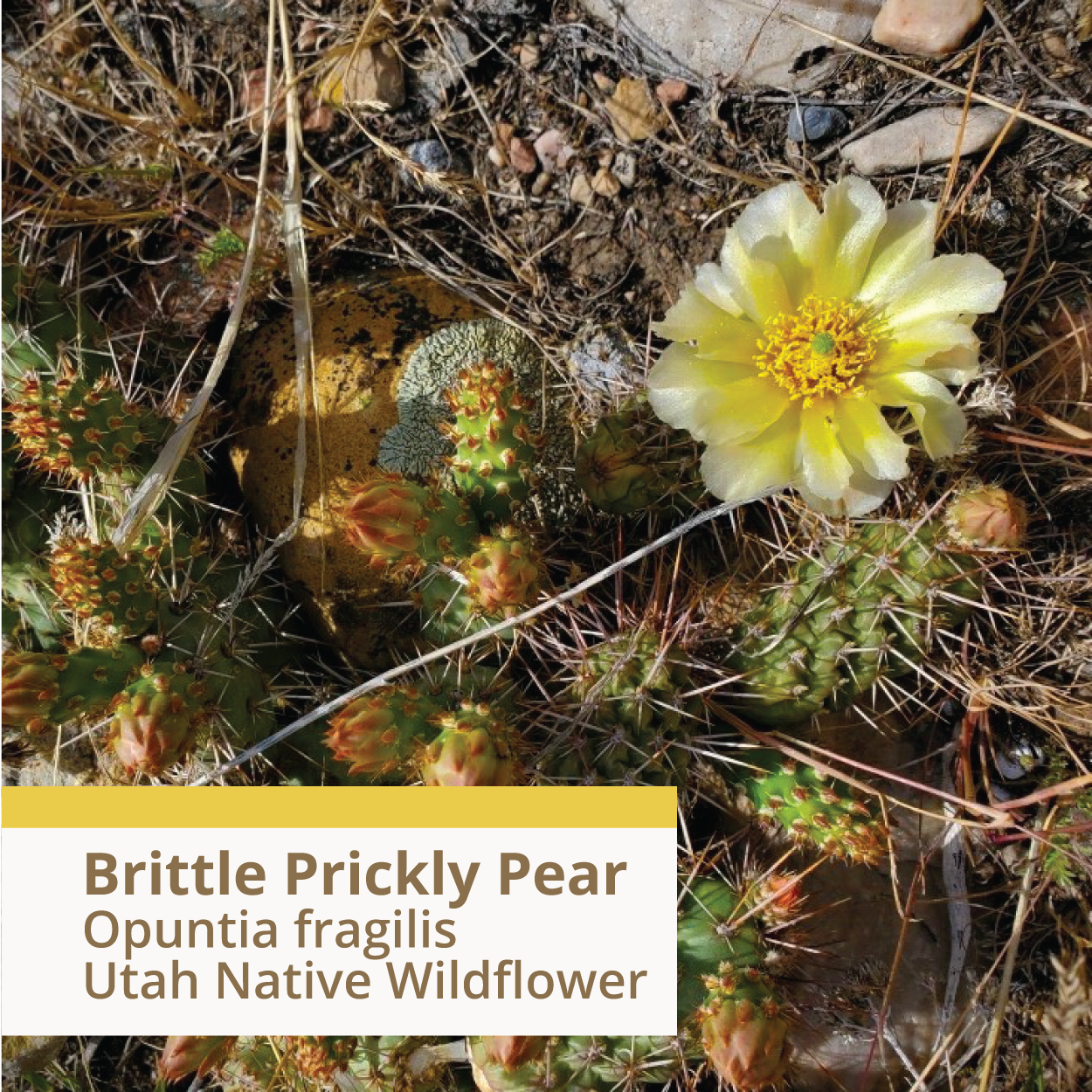
BRITTLE PRICKLY PEAR
Cactus in northern Utah? Yes! The brittle prickly pear is a tough one – able to withstand temperatures as low as -35 degrees, which allows it to survive our cold winters. The Brittle Prickly Pear has luminous yellow blooms and its paddles have an irregular growing pattern and thick pads making it less orderly-looking than other cactus species.
Keep your dogs on a leash where these plants are found – they propagate by attaching small pads to passing animals. Brittle Prickly Pear can be found in the Meridian Peak area and occasionally in the central Foothills.

SPOTTED STICKSEED
Spotted Stickseed is a small, delicate plant that thrives in sagebrush habitats and on sandy slopes. It has five-petaled white blooms with a touch of blue at the base of each petal. After it is done blooming, its small, bristly seeds/burs easily stick to clothing and animal fur, giving the plants its name.
Find this plant along the BST West City Creek trail.
Be W.I.L.D Among the Wildflowers
- Welcome
The Foothills Trail System’s vision is to provide a variety of recreational and cultural experiences for diverse ages and abilities while managing the Foothills’ environmental resources for future generations. Public Lands welcomes anyone to come visit the Foothills to appreciate the blooms this season. - Inclusive Spaces
While “Inclusive Spaces” usually refers to being inclusive of other trail users, please keep in mind that we want to be inclusive of our native flora and fauna as well! Please keep your boots, wheels, and dogs on designated trails to allow our wildflowers to thrive. Learn trail use guidelines and support our inclusive trails and natural lands community. - Limit Your Impact
The Foothills are home to a multitude of animals, native wildflowers, and plants that make this area special and unique. Taking only photos, keeping dogs on-leash, and staying on designated trails while viewing wildflowers all help limit your impact on the delicate environment surrounding Foothills trails. - Do What You Can
Are you interested in giving back to the Foothills? Do you want to contribute to building a better Foothills community? Visit our stewardship page for information on how to get involved.
We hope you find a wide variety of interesting, beautiful flowers out on the trails this summer! Follow @SLCPublicLands on social to stay up to date on Foothills events, news, and more.
